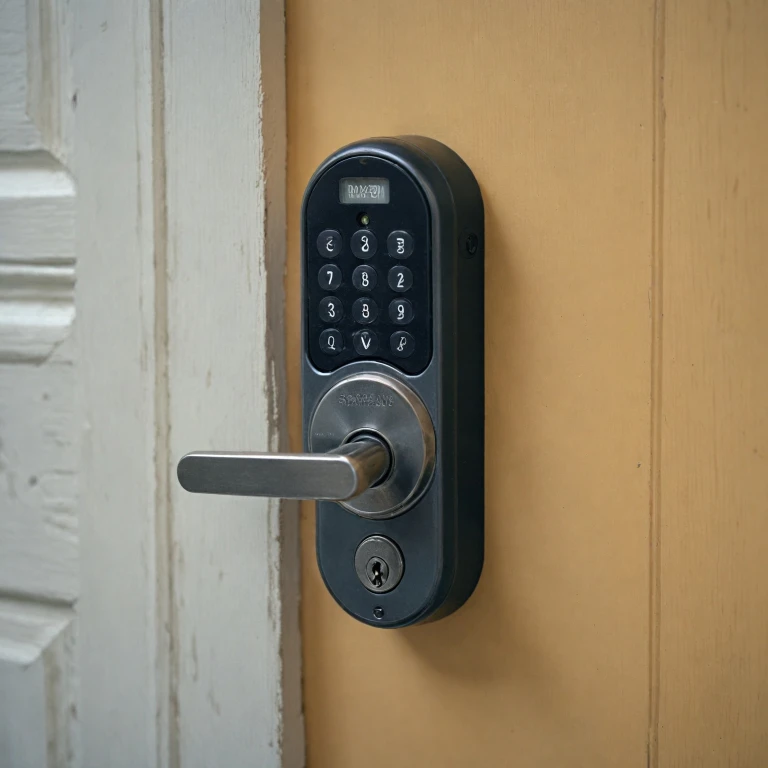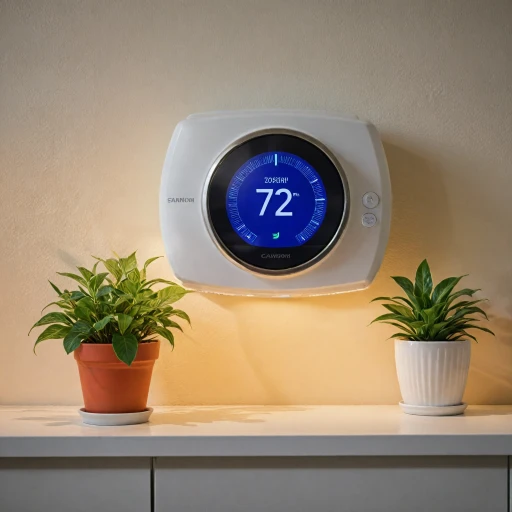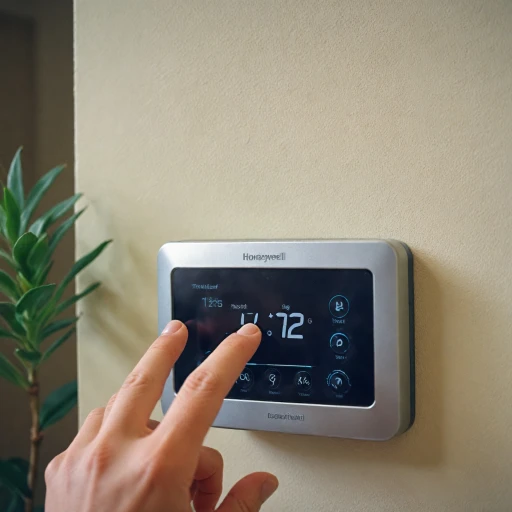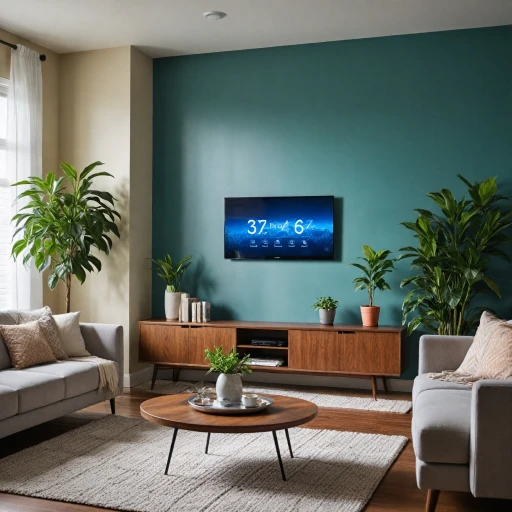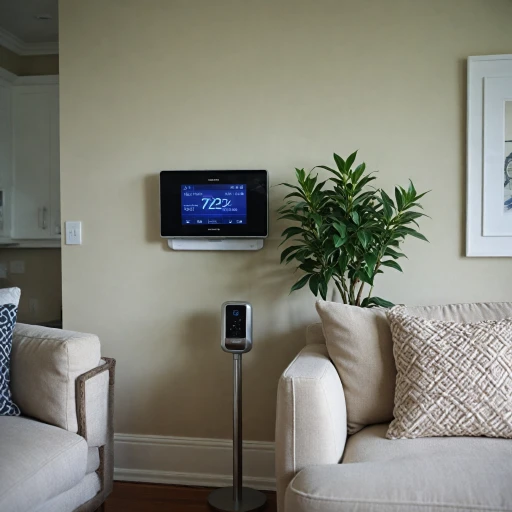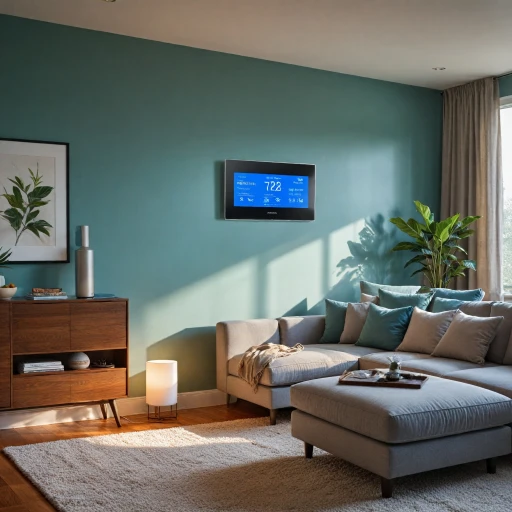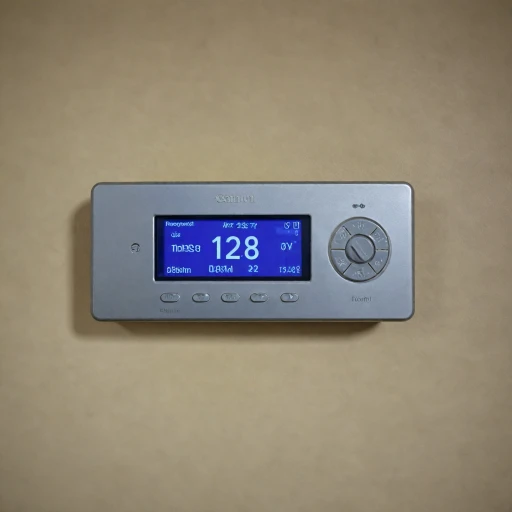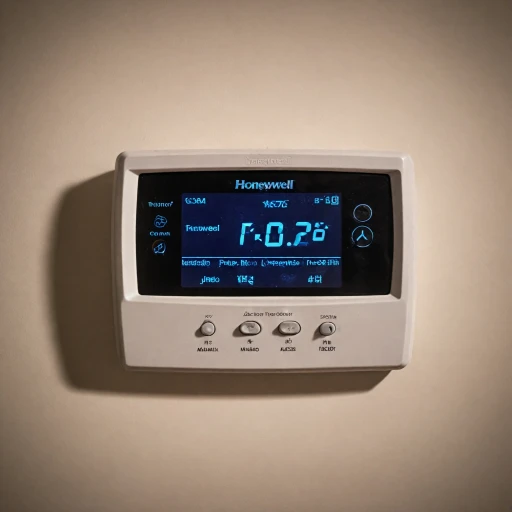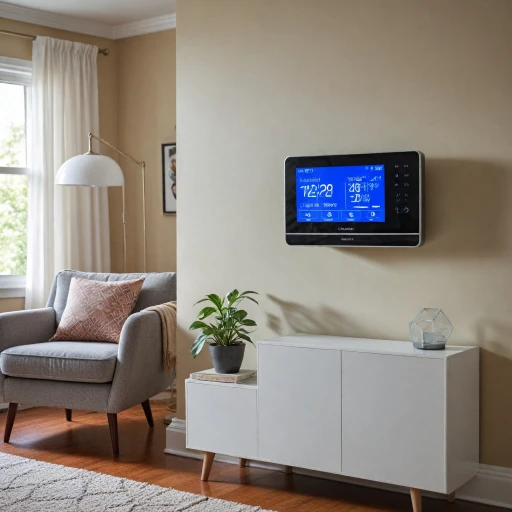
Understanding Smart Thermostats: An Overview
An Introduction to Smart Thermostats
In recent years, the evolution of smart technology has permeated almost every aspect of our daily lives, and thermostats are no exception. The integration of smart thermostats into modern homes is revolutionizing how we control and optimize our heating and cooling systems. These advanced systems offer more than just the ability to set temperatures manually; they bring a suite of features designed to enhance energy efficiency and user convenience.
Smart thermostats employ the latest technology to learn your temperature preferences over time. Similar to a smart lock, which might use wave technology and user codes – thermostats can connect to your home network, offering remote control options via a smartphone app. This connectivity ensures that, regardless of whether you are at home or away, you can adjust settings with ease – no different than managing a Kwikset smart lock with an app.
Another striking feature of these devices is their ability to provide insightful energy reports, a bit like how electronic deadbolt systems offer lock reset notifications. By analyzing patterns and usage, smart thermostats can suggest more efficient schedules and alert users to potential energy savings opportunities.
While they offer numerous benefits, smart thermostats also present certain challenges, especially during the installation and setup phase. Like programming smartcode electronic deadbolts, users may need to read the instructions or access technical support to successfully complete setup. Understanding how these devices operate when faced with common issues ensures a seamless experience and maximizes their potential.
Stay tuned as we delve deeper into the specifics of choosing the right thermostat, optimizing energy use, and future trends in the field. In the meantime, if your thermostat experiences any glitches, think of it like resetting a deadbolt wave lock – sometimes a simple reset button press can resolve the issue effortlessly.
Key Features of Smart Thermostats
Exploring the Functionalities of Smart Thermostats
Today's smart thermostats are much more than just simple temperature regulators. These devices come packed with several features that help enhance comfort and energy efficiency in the home. They integrate with various smart systems and use advanced technology to provide users with exceptional control over their home environment. Let's dive into some of the key features that you should be aware of when considering a smart thermostat.
Remote Access and Control
Smart thermostats allow users to control their heating and cooling systems from virtually anywhere using a smartphone app. This remote functionality means you can adjust settings, program schedules, and monitor energy usage even when you're not at home. These advancements align closely with the idea of having a smart lock equipped on your front door, where you can use an app to manage settings like a lock reset without being physically present.
Learning Capabilities
Many modern smart thermostats come with learning capabilities. They observe your behavior over time and automatically adjust the temperature settings to suit your routine. This feature mirrors some advanced smartcode electronic door locks, which can learn user entry patterns to enhance security.
Integration with Smart Home Ecosystems
Integration capability is a major attraction of smart thermostats. They can connect effortlessly with other devices in your smart home system, such as lights, sensors, and even electronic deadbolts. For example, compatibility with systems like Kwikset's smartcode locks means you could potentially set your thermostat to adjust automatically when you unlock the door.
Energy Efficiency Insights
By providing insights into your energy usage, smart thermostats help users optimize their electricity consumption, leading to significant savings. Much like a factory reset on a smart lock that returns the device to its default settings, these thermostats can offer resets in scheduling that lead to more efficient energy use.
User-Friendly Interface
Ease of use is key in smart home technology. Smart thermostats typically feature user-friendly touchscreens and interfaces that allow for easy navigation and setup, similar to the intuitive keypad on an electronic deadbolt. Some models even feature wave technology, allowing for hands-free adjustments.
Whether you're reading reviews for a new system or are tasked with troubleshooting common frustrations, such as connectivity issues akin to a network reset, it's important to understand these innovative features. Smart thermostats are more than just tools for temperature control; they are central components of the connected home experience, harmonizing seamlessly with your existing smart systems and electronic locks.
Installation and Setup Challenges
Challenges You Might Face During Installation and Setup
Installing a smart thermostat can seem like a daunting task—much like setting up electronic deadbolts or smart locks with keypad technology. However, a little preparation can often prevent many of the common installation challenges. Unlike resetting or reprogramming a Kwikset smart lock with its various buttons and codes, installing a smart thermostat involves more intricate operations. One of the main hurdles involves understanding your home's existing wiring and HVAC system. Smart thermostats generally require a stable power source, often through a C-wire. If your system lacks this, you may need to employ alternative solutions or seek professional assistance. Another challenge is syncing your new device with the home’s Wi-Fi network. While superficially this resembles network reset procedures for smart systems, missteps here can lead to disconnects or an unresponsive app interface. Reading the setup guide carefully is crucial to avoiding frustration. Configuring user codes and schedules remotely—akin to pressing the program button on a smartcode electronic lock—also requires a learning curve. Errors in these setups can lead to uncomfortable temperatures or unexpected energy costs. Lastly, the initial setup of smart systems relies heavily on software interfaces. Often, these tech platforms update or have unique factory settings. Like a factory reset process for an electronic deadbolt or a reset button on a smart lock, it's essential to understand where and how to access system settings and controls. Approaching these challenges methodically, and referring to comprehensive manuals, much like those that come with devices like Kwikset locks, can make the process smoother. Consistent LED flashes or other indicators can serve as helpful guides during installation and troubleshooting. Patience, combined with the right resources, can ease the transition to smarter, more efficient home climate control.Optimizing Energy Savings with Smart Thermostats
Maximizing Energy Efficiency with Smart Thermostats
Smart thermostats are transforming how users manage energy consumption in their homes. By leveraging cutting-edge technology, these devices can help significantly reduce energy usage and lower utility bills. Here are some ways to optimize energy savings with your smart thermostat:- Schedule Programming: Many smart thermostats allow users to program heating and cooling schedules. By setting a precise timetable for when your home starts heating or cooling, unnecessary energy use can be mitigated. For instance, lowering the temperature by a few degrees when the house is empty can lead to substantial savings.
- Learning Abilities: Some smart thermostats come equipped with adaptive learning capabilities. They understand your usage patterns and preferences over time, adjusting the temperature automatically. This helps in maintaining comfort while avoiding excess energy consumption.
- Integration with Smart Systems: Integrating your smart thermostat with other smart home devices, like lock systems and electronic deadbolts, can enhance overall efficiency. When a smart lock detects that no one is home, it can signal the thermostat to lower energy usage.
- Remote Access Via Apps: Utilizing the app connectivity feature, users can control their thermostat settings from virtually anywhere. Whether you're at work or on vacation, you can adjust the temperature to ensure energy isn't wasted.
- Analysis of Energy Reports: Many smart thermostats provide detailed energy reports. Reviewing these can offer insights into your energy habits, helping pinpoint areas where further efficiency can be achieved.
- Automatic Adjustments Using Sensors: Sensors can detect when people are present and adjust settings accordingly. For instance, increasing heating when someone enters a room, and reducing it once they leave, can contribute to energy savings without sacrificing comfort.
Troubleshooting Common Issues
Troubleshooting Issues with Your Smart Thermostat
Smart thermostats can be a boon to energy efficiency and home automation, but like any piece of technology, they aren't immune to hiccups. Addressing these challenges requires a bit of patience and an understanding of the device's functionality. Below you will find solutions to common issues you might face with your smart thermostat.
Connectivity Problems
Connectivity is central to the performance of smart thermostats. Suppose your device fails to connect to the network or app. In that case, a network reset might be necessary. To perform a network reset, ensure you follow the manufacturer's specific instructions. This generally involves accessing the network settings on your thermostat and selecting the option to reset network settings.
Device Malfunctions
If your thermostat is unresponsive or doesn’t seem to function as expected, a factory reset might resolve these issues. Bear in mind that this action will restore the thermostat to its default settings, erasing all personalized configurations. To initiate a factory reset, look for a reset button typically located under a battery cover or in a settings menu. Firmly press hold this button for a specified number of seconds, as instructed by your device’s user manual, until the LED flashes to indicate the reset.
Incorrect Temperature Readings
Sometimes smart thermostats can display inaccurate temperature readings. This could be due to sensor issues or incorrect positioning of the device. Ensure your thermostat is mounted away from direct sunlight, drafts, and any heat sources, as these can distort the temperature reading.
Battery Issues
Like other electronic devices, smart thermostats require a reliable power source. If your thermostat is battery-operated and experiencing issues, check whether a battery change may fix the problem. Consult the device instructions for proper battery replacement procedures.
User Code and Smart System Integration
Integrating the thermostat with your home’s smart system may also present challenges, especially when aligning user codes with smartcode functionality. Should these systems fail to synchronize, a smartcode reset might be needed. This involves resetting the user codes in both your smart thermostat and any connected smart lock devices, using the predefined code or program button as described in your smart system's manual.
Future Trends in Smart Thermostat Technology
Emerging Innovations in Smart Thermostat Technology
Smart thermostats have come a long way since their inception, steadily evolving with new technologies and features. As homes become smarter, the demand for more advanced devices in various aspects of home automation, like smart locks and electronic deadbolts, continues to grow. Let's explore some future trends in smart thermostat technology that are set to redefine how we manage home climates and energy efficiency.- Integration with Broader Smart Home Ecosystems:
- Enhanced User Interfaces and Interaction:
- Smarter Energy Management:
- Improved Learning Algorithms:
- Enhanced Security Features:
